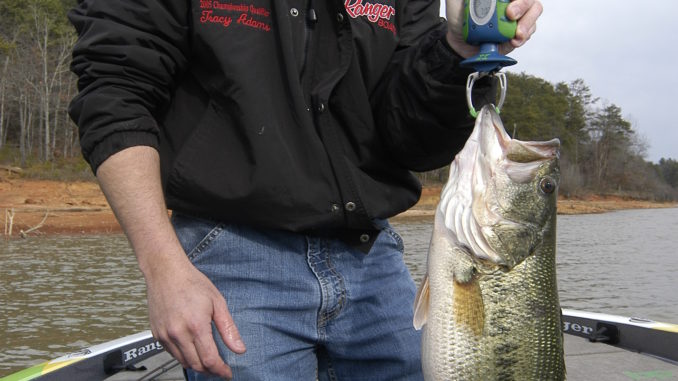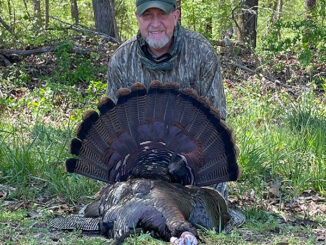
Winter and early spring are usually difficult seasons for bass anglers because cold water temperatures slow fish metabolisms, which means they don’t need to eat as much as they do during the spring and summer.
But largemouth bass have to eat some time and congregate at the deepest parts of impoundments because the water temperature is fairly stable and warm enough to attract baitfish. Picture a minnow bucket of water left outside during freezing weather; ice first will form at the top of the bucket and may be an inch thick — but near the bottom the water won’t be frozen and minnows can swim as lively as can be.
Anglers who like to fish for bass year round, such as Phil Cable of Holly Springs (Phil Cable Guide Service, 919-762-9697 or 919-815-1185), figured out long ago the best way to have fun catching chubs, even during the coldest days, is to use spoons to fish through and underneath baitfish schools.
“The best spoon bite right now is at Shearon Harris Lake,” he said, “but you also can catch fish with spoons at Falls Lake, just deeper.”
When Cable fishes these lakes, he’ll first cruise for a while, looking for “balls” of baitfish (threadfin shad). Bass hang out underneath these schools because shad normally die off during winter and minnows fall out of the schools, drifting toward the bottom — which offers free, easy meals for bigmouths with a minimum amount of chasing effort.
“The minimum bite at Harris is 20- to 25-feet deep,” he said, “while at Falls the minimum bite starts at 40 feet. You just need to find baits near deep dropoffs, creek channels and ledges and pass up open, shallow flats. The baits just move through (shallow areas) and don’t orient at structure.”
Anglers who like to fish at Kerr Reservoir (aka Buggs Island) also use the deep-spoon technique, Cable said, especially near the old and new U.S. 58 bridges at Clarksville, Va.
“Up there (Kerr), you’re jump fishing — chasing birds,” he said.
Pieces of baitfish float to the surface as bass attack the falling/schooling shad, and the birds, mostly sea gulls, dive on those morsels, giving away gamefish locations.
“You can catch dozens of big white perch as well, from 1 to 1 1/2 pounds,” Cable said, “by dropping down spoons. You also might get a surprise from a big catfish.”
The last time he jump fished spoons at Clarksville, Cable said he and a partner caught a flathead “that was close to 5-feet long with a head as big around as a basketball. We also caught some blue cats and 12 stripers.”
At Kerr the best tackle are 7-foot-long medium-stiff rods fitted with baitcaster reels and 20-pound-test line. At Harris and Falls, 8- to 10-pound-test monofilament with Hopkins spoons or other types of weighted spoons work well for largemouths. Spinning tackle works fine for the Triangle lakes.





Be the first to comment